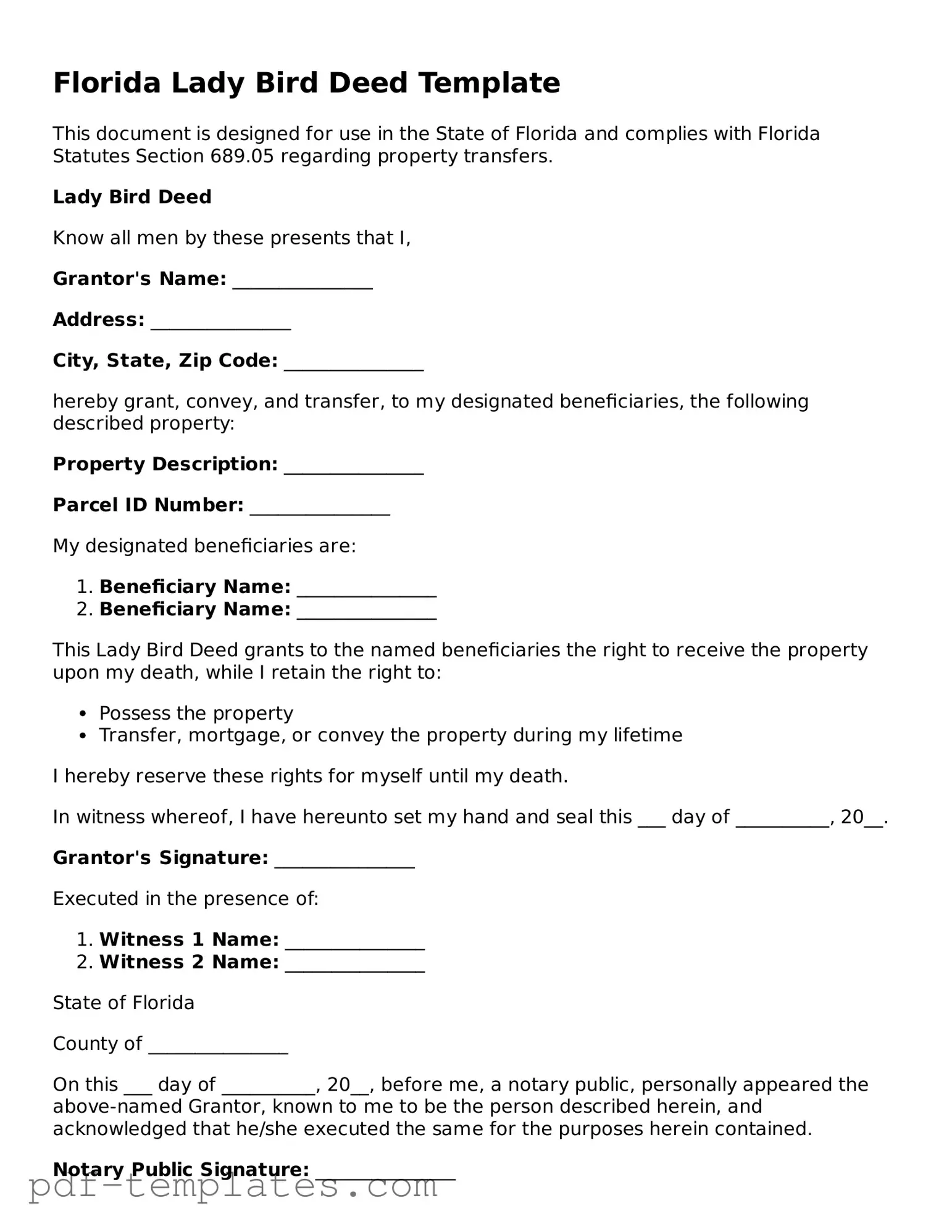The Florida Lady Bird Deed shares similarities with a traditional warranty deed. Both documents transfer ownership of real property. A warranty deed guarantees that the seller has a clear title to the property and will defend that title against any claims. However, the Lady Bird Deed allows the property owner to retain certain rights during their lifetime, such as the right to live in the property and the ability to sell it without the beneficiary's consent. This makes it a more flexible option for those looking to manage their estate while still enjoying their property.
Another document akin to the Lady Bird Deed is the revocable living trust. Like the Lady Bird Deed, a revocable living trust allows property owners to maintain control over their assets while planning for the future. Both documents can help avoid probate, which simplifies the transfer of property upon death. However, a living trust requires the property owner to transfer the title of their property into the trust, whereas a Lady Bird Deed allows the owner to keep the title in their name while designating beneficiaries.
A quitclaim deed is also comparable to the Lady Bird Deed. Both serve to transfer ownership of property, but they do so in different ways. A quitclaim deed transfers whatever interest the grantor has in the property, without any guarantees about the title. This means that if the grantor does not have a clear title, the grantee may end up with nothing. In contrast, the Lady Bird Deed ensures that the grantor retains rights to the property during their lifetime, providing more security for the original owner.
In the realm of California real estate, understanding the various legal documents is essential for effective property management. Landlords often utilize the California Rental Application form to ensure a smooth leasing process by gathering vital information from potential tenants. This tool, similar to estate planning instruments, emphasizes the importance of thorough evaluation and pre-screening. For landlords looking to standardize their approach, resources such as All California Forms provide indispensable guidance in maintaining compliance with housing regulations while safeguarding their interests.
The life estate deed is another document that resembles the Lady Bird Deed. Both types of deeds allow an individual to retain rights to a property while designating a beneficiary to inherit it after their death. With a life estate deed, the original owner has the right to use the property for their lifetime, but they cannot sell or mortgage it without the consent of the remainderman. The Lady Bird Deed, however, grants the owner more flexibility, allowing them to sell or change beneficiaries without needing permission.
Lastly, the enhanced life estate deed is similar to the Lady Bird Deed in that it allows for the transfer of property while retaining certain rights. This type of deed allows the owner to live in the property and maintain control during their lifetime, similar to the Lady Bird Deed. The key difference lies in the specific language and the legal implications that come with each. The enhanced life estate deed may not provide the same level of flexibility as the Lady Bird Deed, particularly regarding the ability to sell the property without the beneficiaries’ involvement.
